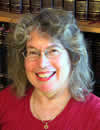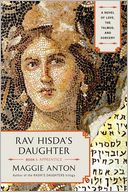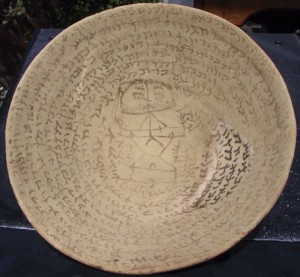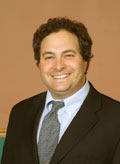
Dr. Jonathan Krasner
I am excited to share my conversation with Dr. Jonathan Krasner, HUC professor of the American Jewish Experience and author of The Benderly Boys & American Jewish Education.
SFS: Jonathan, congratulations on winning the National Jewish Book Award for American Jewish Studies!
JK: Thanks, Sheryl. It is very exciting!
SFS: I had not realized until I read your book, how big an impact Samson Benderly has made on my life and that of my children. In fact, I had never heard of him. But I suspect his fingerprints are all over the Jewish supplementary schools and camp that I attended as well as here HUC. Tell me about Benderly’s major works.
JK: Samson Benderly was a fascinating guy. Born into a Hasidic family in Safed in the late 19th century, he defied his parents and went to study medicine in Beirut and, later, Baltimore. In order to support himself he taught Hebrew and eventually became the head of a progressive supplementary school in Baltimore. Somewhere along the way he became one of the earliest Jewish educators in North America to teach Hebrew using the immersion method — Ivrit b’Ivrit. One of his earliest students was Henrietta Szold, who would go on to found Hadassah.
Over time, he realized that his sideline was actually his passion and he gave up medicine for education. News of his progressive methods and impressive results spread and he was called to New York to direct the first bureau of Jewish education. From his perch at the BJE, where he worked from 1910-1941, he worked to professionalize the field, modernize the supplementary schools, train teachers, develop curricula and teaching materials, open the first Jewish culture camps, and convince Federation that Jewish education should be a community responsibility. Most importantly, perhaps, he raised a generation of disciples who spread his ideas to communities across North America. They were known as the “Benderly boys.”
 SFS: I was surprised that much of his early work focused on Jewish education for girls. Why did he think that was important and how did he make his programs so successful?
SFS: I was surprised that much of his early work focused on Jewish education for girls. Why did he think that was important and how did he make his programs so successful?
JK: Benderly’s interest in girls’ education stemmed from his conviction that the “future mothers of Israel” needed to have a strong Jewish foundation if they were to raise knowledgeable children with positive Jewish identities. Like many secular educators of his day, Benderly also believed that women’s dispositions made them better teachers, on average, than men, especially for young children. So he was very interested in preparing his most promising female students to become teachers. There was also some opportunism at play. Benderly wanted to open laboratory schools that would train teachers and pioneer modern methods. But he feared that parents would be hesitant to send their boys to these untested and newfangled institutions. Girls, on the other hand represented a terribly underserved market. With few alternatives, parents were more likely to “take a chance” with their girls. ( There was a further consideration that made girls’ education attractive: In those days, girls did not have bat mitzvahs, so the lab schools were under no pressure to teach to the test, so to speak.)
By the way, the “Benderly boys” included a number of girls! They received the same training as their male colleagues, studying at Columbia University Teachers College and the Jewish Theological Seminary’s Teachers Institute while interning at the Bureau of Jewish Education under Benderly’s mentorship. Most of these women followed the gender conventions of the day and eventually gave up their jobs to raise families. But a few stayed in the field. Libbie Berkson ran Camp Modin in Canaan, Maine for many years, and Leah Klepper taught pedagogy at the Teachers Institute.
SFS: Benderly worked largely with Jewish immigrants, especially in the early 1900’s. Immigrants often put much of their energy into assimilating and melting into the proverbial American pot. How did he entice them into incorporating Jewish education and religious (not just cultural) identity into their lives?
JK: Your question is very perceptive and points to one of Benderly’s greatest challenges. On the one hand, there were traditionalists who really wanted to give their children the same Jewish education they had back in eastern Europe. On the other hand, there were, for lack of a better term, assimilationists, who were far more concerned about making sure that their children fit in and succeeded in American society more generally. Benderly was promoting a third option, teaching an Americanized Judaism that was perceived to be in harmony with American culture and values and would not conflict with Jewish socio-economic aspirations. It was a struggle at first and there were many parents and community leaders who resisted. But as fears grew about an Jewishly alienated and godless second generation, more people began to embrace Benderly’s approach. As one Orthodox rabbi put it, Benderly’s methods might not be his cup of tea, but he seemed to get kids excited about Judaism, and that was worth the world. To be honest, however, Benderly’s modernized supplementary school only achieves universal acceptance in the postwar period when it becomes a standard feature of the suburban synagogue center.
SFS: The institutions that he created were very different from those of the European Jewish communities. What did Benderly feel was important for American Judaism?
JK: Benderly was an immigrant and he had the typical immigrant’s enthusiasm for America as a land of opportunity and a haven from intolerance. He was not interested in a strategy of resistance. Rather, he was an accommodationist. He thought Judaism could be harmonized with American values. But he also believed that it needed to be modernized in order to appeal to the younger generation. Benderly was also a cultural Zionist and believed that American Jewish culture could and should draw inspiration from the Jewish upbuilding of Palestine (Eretz Yisrael).
SFS: I was surprised to learn that Benderly was opposed to Jewish day schools. Why was that?
JK: Benderly realized that the vast majority of American Jews were wedded to the public schools. Secular education was a vehicle for socio-economic advancement and Americanization. So, his focus on supplementary education was based on practicality. It is important to remember that day school education did not really take off until the postwar era. At the same time, however, Benderly believed in the democratic mission of the public schools. So, there was also an ideological component to his opposition.
SFS: Jonathan, I have a question about your approach to this material. You mentioned that much of the previous scholarship on Jewish education was “prescriptive;” that it showed a top-down approach to what Jewish programs intended to do. You, however, wanted to be more “descriptive.” Can you tell me what that means to your research?
JK: Previous historians of Jewish education tended to also be practitioners. They had a vested interest in promoting a particular narrative. some were also sheepish about admitting the extent to which the educators’ aspirations went unrealized. they did not want to admit failure. I am certainly not dispassionate about my subject. But I think I have a level of distance that allows me to be more clear-eyed. I’ve also tried hard to supplement prescriptive materials — curricula, textbooks, articles — with descriptive sources — photos, internal reports, private correspondence. Taken together, I think they paint a more well-rounded picture of Jewish education in the first half of the 20th century.
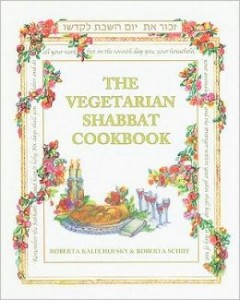 So I’m tempted to heat up the kitchen with some new recipes. Browsing the library’s catalog, I found lots of new cookbooks to inspire me and I hope, my family.
So I’m tempted to heat up the kitchen with some new recipes. Browsing the library’s catalog, I found lots of new cookbooks to inspire me and I hope, my family. The Ottoman Turk and the Pretty Jewish Girl is part history, part cookbook and part genealogy of the author’s, Beyhan Cagri Trock’s, family. Each borek recipe looked more enticing than the next. Similarly, Amnun Kimyagarov explains the many influences that show up in Classic Central Asian (Bukharian) Jewish Cuisine and Customs. I’m not sure how my family would react to tripe, but the pumpkin turnovers should be a hit.
The Ottoman Turk and the Pretty Jewish Girl is part history, part cookbook and part genealogy of the author’s, Beyhan Cagri Trock’s, family. Each borek recipe looked more enticing than the next. Similarly, Amnun Kimyagarov explains the many influences that show up in Classic Central Asian (Bukharian) Jewish Cuisine and Customs. I’m not sure how my family would react to tripe, but the pumpkin turnovers should be a hit. There are many color pictures and hints and words of wisdom from “mama.” Feed Me Bubbe : Recipes and Wisdom from America’s Favorite Online Grandmother / by Avrom Honig and Bubbe has a similar set of recipes (minus the Israeli) but is sprinkled with stories from Bubbe’s life.
There are many color pictures and hints and words of wisdom from “mama.” Feed Me Bubbe : Recipes and Wisdom from America’s Favorite Online Grandmother / by Avrom Honig and Bubbe has a similar set of recipes (minus the Israeli) but is sprinkled with stories from Bubbe’s life. And for a calorie-free dessert, I’ll curl up on my couch with On the Chocolate Trail by Deborah Prinz. Rabbi Prinz takes us on a journey from the New World to the Old and back in the footsteps of Jewish travelers, merchants, and chocolatiers.
And for a calorie-free dessert, I’ll curl up on my couch with On the Chocolate Trail by Deborah Prinz. Rabbi Prinz takes us on a journey from the New World to the Old and back in the footsteps of Jewish travelers, merchants, and chocolatiers.
